At what distance to plant currants?

Currant bushes can often be seen in garden plots. The berries of this plant are very useful and tasty. To get a full harvest from this fruiting shrub, you need to know some of the nuances. They also concern the planting scheme. We will talk about what the optimal distance between currant bushes should be, about the interval between them and the fence, as well as about planting schemes.
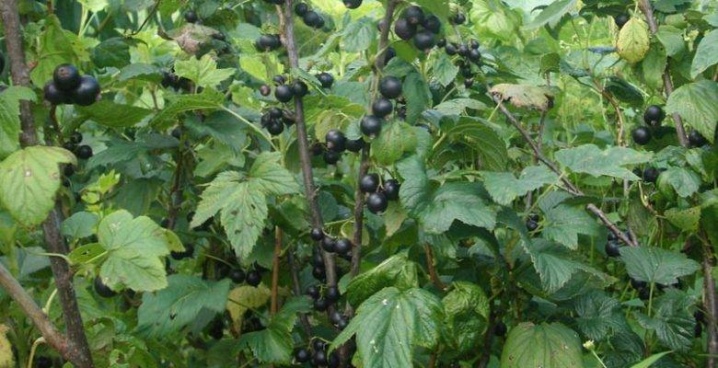
Influencing factors
Currant is not in vain considered one of the most useful shrubs. Black, red and white - they have an excellent taste, these berries can be called a storehouse of useful vitamins and minerals. Medicinal properties are possessed not only by berries, but also by leaves and shrub stems.
This useful plant regularly pleases gardeners with delicious fortified fruits, which are so necessary after winter. Its bushes begin to bear fruit early, making it possible to enjoy aromatic sweet and sour berries.
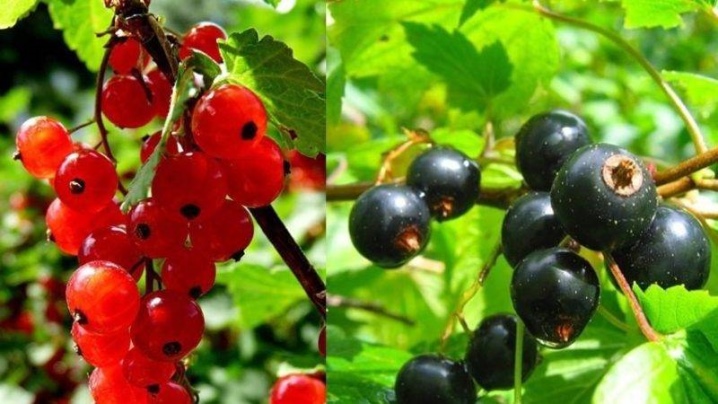
Their growth, development and further fruiting depend on how correctly and at what time the planting was carried out. Autumn is considered the best time for planting. Currant seedlings are planted in early October. Many try to do this in the spring, but, as practice shows, such seedlings take root much worse. In autumn, the plants begin to gain strength and by the beginning of the growing season they come up with a good root system.
For spring planting, 2-year-old seedlings with well-developed roots and formed skeletal branches are more suitable.
The culture is transplanted at a strictly defined time, while the buds have not yet awakened, otherwise the plant may not take root.

With regular care, currant bushes will be able to bear fruit in the garden for at least 10-15 years, which is why it is important to accurately determine a suitable place for seedlings. Regardless of when they are planted, currant bushes require fertile soil. This culture will grow worse in swampy areas, with an abundance of moisture, the presence of drafts. More suitable for this are areas with non-acidic soil. They should be free of weeds and overgrowth of wild trees or shrubs. Well-ventilated, well-lit areas are suitable for cultivation. It is unacceptable if the groundwater is very high. With a depth of less than 1 meter, it is not worth planting bushes. It is desirable that the place chosen for seedlings is located in the southern or southeastern part of the site.
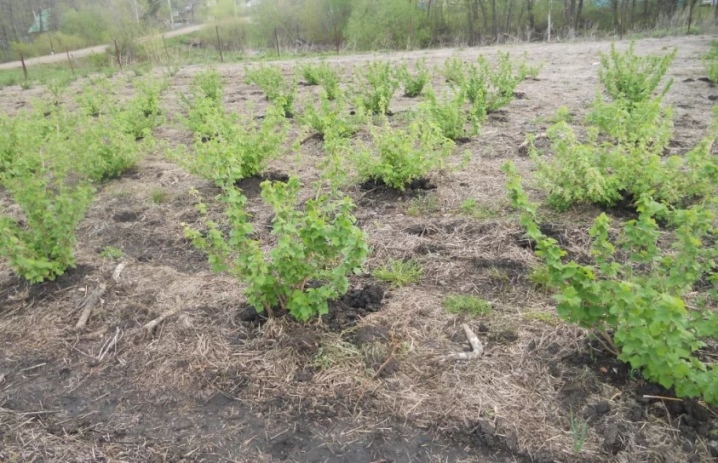
When planting, it is important to understand that seedlings have different characteristics, different branching. After some time, a full-fledged bush is obtained from a thin seedling, which begins to take up quite a lot of space. Sufficient space should be provided for young bushes located nearby. Mature plants should not be in contact with each other. Plants planted at this distance will be able to properly receive the required amount of heat and light.
With an optimally selected distance between the bushes, gardeners freely irrigate, huddle, and apply fertilizers. In this case, picking ripe berries will also be very convenient.
Thickened plants should be thinned out, making similar manipulations in the spring or in the fall.
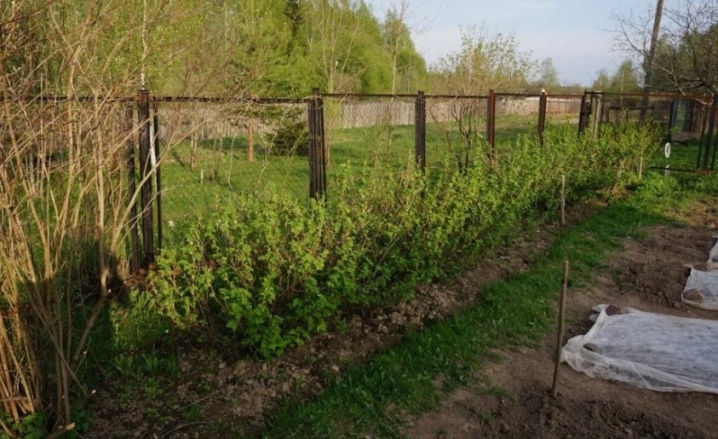
Often, inexperienced summer residents consider these parameters to be erroneous and not very rational, trying to save space on the site.If you start to unreasonably reduce the distance between the rows, this will affect the yield, which can sharply decrease.
Bushes cannot be planted too close to each other, at the same time, an unnecessarily large distance is also undesirable, since cross-pollination is necessary for many varieties. Far-reaching bushes can make it difficult for pollen to reach, which will lead to a decrease in yield due to poor ovary. In addition, it is more difficult to care for far-growing plants, especially when it comes to watering and fertilizing.

Distance between bushes
In order to place the seedlings as correctly as possible, it is necessary to take into account the variety of currants, the soil on the site, and the illumination.
The landing pattern will allow you to make the right choice. When breeding currants, you should follow the recommendations of experts.
- When planting bushes with white berries, the distance between them should be about 1.25 meters, and between the rows - 2 meters.
- Bushes with red currants are planted at a distance of 1.5 meters from each other. And two meters recede between the rows.
- For varieties with black berries, these parameters are 1.5 meters between bushes and up to 2.5 meters between rows.

It is advisable to plant varieties with black berries separately from other varieties of currants, this will increase the yield of plants. At the same time, red and white currant varieties can be mixed. The placement of various species leads to an increase in their yield due to the mutual pollination of crops.
- Blackcurrant varieties can be low to medium branching. The spacing between adjacent bushes for these options should be about 80–90 cm. These varieties with a similar degree of branching grow upward, which will not interfere with the seedlings located nearby.
- You can also find very sprawling options. Such bushes with black berries are located at a distance of 1.5 meters between them. If possible, the gap is made large, taking into account the crown.
- Red and white currants have a low degree of branching and are erect. Such seedlings are planted in rows, retreating one meter at a time. With such a distance, it will be easy to care for the plants, as well as to spray the bushes, feed them, and garter. Harvesting will take place without difficulty.
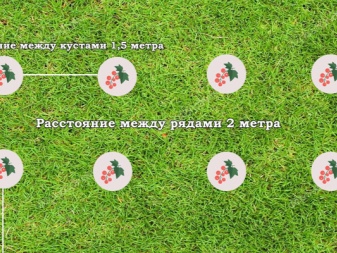
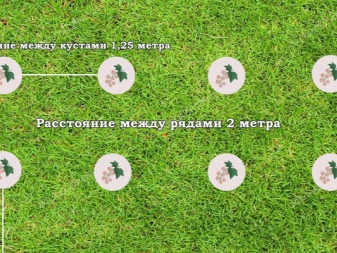
When planting seedlings, it is necessary to outline a sufficient distance between the rows, up to 2.7 meters.
When marking, it is important to take into account the location of crops next to currant bushes. There is an opinion that it costs nothing to plant next to fruit representatives of the flora. The neighborhood of currants is undesirable with gooseberries and raspberries.
It is necessary to place currants next to the gooseberries at a distance of at least 1 meter, closer proximity will lead to their defeat by the same diseases and pests.
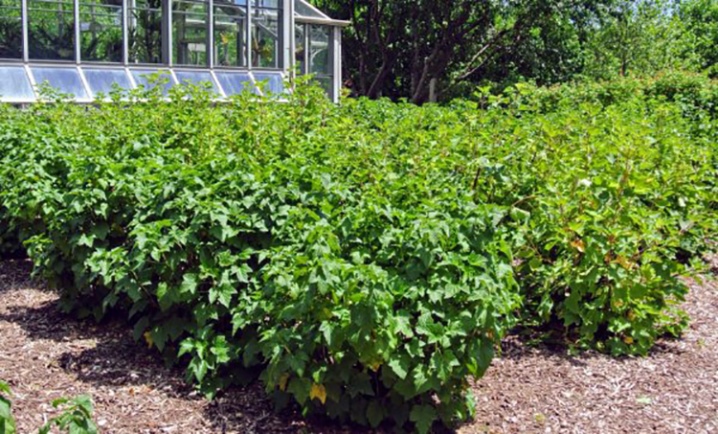
According to experienced agronomists, currant and raspberry seedlings should not be planted next to each other, otherwise the latter will begin to oppress nearby shrubs (due to rapid growth), which will ultimately lead to their death. To prevent the growth from clogging young bushes, it is necessary to retreat from the raspberries by at least 2 meters.
At the same time, currants have good compatibility with apple and honeysuckle, as well as onions, garlic and strawberries. The best "neighbors" for currant plantations are garlic and onions.
Due to their close location, the shrubs will be protected from the kidney mite.
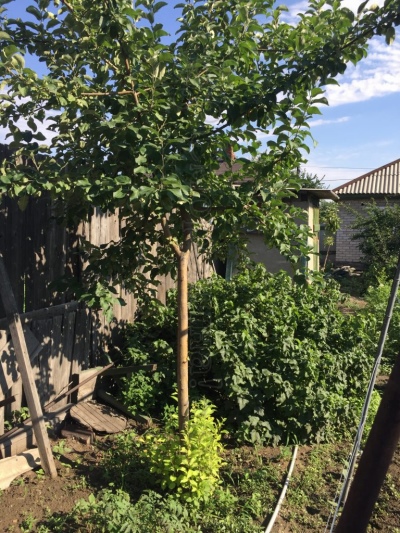
Growing currants on the uterine plantations of the garden, they adhere to a certain narrow-band placement scheme. When choosing the distance between the bushes, you should take into account the varietal characteristics, as well as the methods of reproduction. When using lignified seedlings, the gap between the plants should be 0.5-0.7 meters. If this is done by a horizontal layering, then mother seedlings can be planted in a row more rarely, retreating 1-1.5 meters.
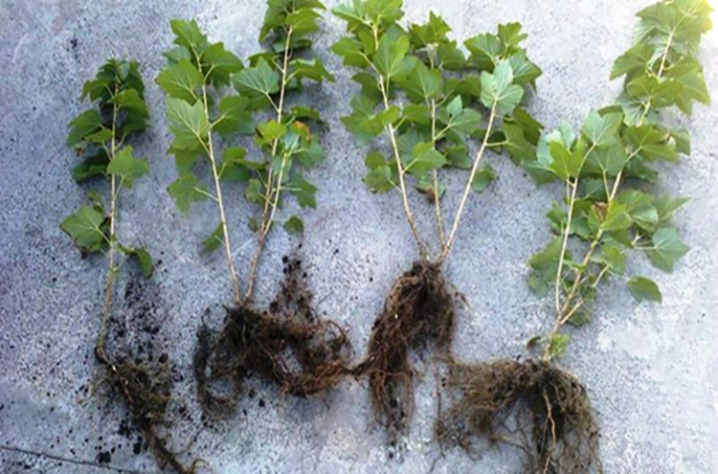
What should be the distance from the fence?
When planting young seedlings in a garden plot, you should retreat the required distance from residential buildings, sheds, as well as from the fence. It is undesirable to place them close to them.
When planting one row, it is advisable to determine the place for the seedlings along the fence. To make the plants feel comfortable, you need to step back 1.2 - 2 meters from the fence and buildings.
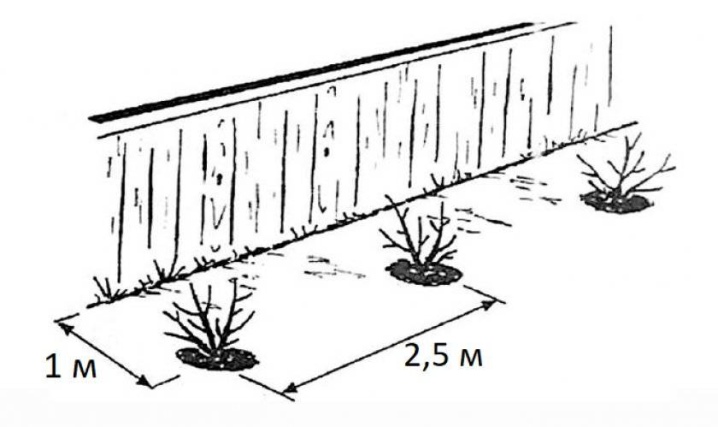
If berry crops will be used as a decorative border, then the distance is reduced to 1 meter. This rule applies to the fence, residential and other buildings on the site. In this case, the gap from the wall to the bushes should not be less than 1 meter.
When planting a shrub for ornamental purposes, one cannot expect good fruiting from plants.
The distance between the bushes is also influenced by the variety of berries. Spreading varieties are planted in one row, retreating 1.5 meters, at the same time, denser rows with alternating bushes every 1 meter are suitable for upright varieties. The row spacing is 2-2.5 meters.














The comment was sent successfully.